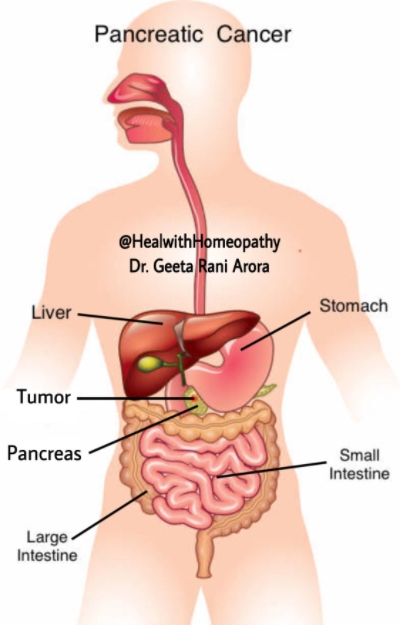 Adenocarcinoma of the pancreas
Adenocarcinoma of the pancreas
Carcinoma of the /rend of the pancreas. –Although it is often described as a painless condition, yet the patient may present with pain as his first symptom.4
Some 90% of pancreatic neoplasm is adenocarcinomas that arise from the pancreatic ducts. These tumors involve local structures and metastasize to regional lymph nodes at an early stage. Most patients have advanced disease at the time of presentation/ when diagnosed.
Neuro-endocrine tumors also arise in the pancreas but tend to grow more slowly and have a better prognosis. Men are affected twice as often as women.1
The disease is associated with increasing age, smoking, long-standing diabetes, and chronic pancreatitis. Coffee-drinking, alcoholism, and cholelithiasis do not.1, 2
Between 5% and 10%of patients has a genetic predisposition: hereditary pancreatitis, HNPCC and familial a typical mole multiple melanoma syndromes (FAMMM).
Clinical features
The tumors are ductal adenocarcinomas and are not usually detected until the disease has spread. About 70% of tumors are in the pancreatic head, 20% in the body, and 10% in the tail.2,3
It is a very aggressive neoplasm.3
- Many patients are asymptomatic until an advanced stage, when they present with central abdominal pain, weight loss and obstructive jaundice. 1, 2, 3
- The abdominal pain results from invasion of the coeliac plexus and is characteristically incessant and gnawing.1, 2, 3.Pain often radiates from the upper abdomen through to the back and may be eased a little by bending forwards. Almost all patients lose weight and many are cachectic.1, 2
- Dyspepsia and early satiety may be present due to delayed gastric emptying (gastro paresis). Vomiting may be present if the tumor has invaded or compressed the second portion of the duodenum, creating a partial or complete intestinal obstruction.
- Around 60% of tumors arise from the head of the pancreas, and involvement of the common bile duct results in the development of obstructive jaundice, often with severe pruritus.1, 2
- Venous thrombosis, acute pancreatitis or depression are other common findings.
Signs on examination
Physical examination reveals clear evidence of weight loss. Anabdominal mass due to the tumor itself, a palpable gall bladder or hepatic metastasis is commonly found. A palpable gall bladder in a jaundiced patient is usually the consequence of distal biliary obstruction by a pancreatic cancer.1
Other findings include left supraclavicular lymphadenopathy (Virchow’s node) and superficial thrombophlebitis (Trousseau’s sign).3
Investigations
The diagnosis is usually made by ultrasound and contrast enhanced CT. Diagnosis in non-jaundiced patients is often delayed because presenting symptoms are relatively non-specific. Fit patients with small, localized tumors should undergo staging to define operability.1
Features on CT scan include alterations in morphology of the gland with abnormalities of CT attenuation values, obliteration of peripancreatic fat, loss of sharp margins with surrounding structures, involvement of adjacent vessels and regional lymph nodes, pancreatic ductal dilatation, pancreatic atrophy, and obstruction of the common bile duct. Tumors less than 1 cm are readily visualized with EUS.3
EUS or laparoscopy with laparoscopic ultrasound will define tumor size, involvement of blood vessels and metastatic spread. In patients unsuitable for surgery because of advanced disease, frailty or co morbidity, EUS- or CT-guided cytology or biopsy can be used to confirm the diagnosis. MRCP and ERCP are sensitive methods of diagnosing pancreatic cancer and are valuable when the diagnosis is in doubt, although differentiation between cancer and localized chronic pancreatitis can be difficult. The main role of ERCP is to insert a stent into the common bile duct to relieve obstructive jaundice in inoperable patients.1, 3
The lesion may have a variable appearance on ultrasonography; it may be hypoechoic, isoechoic, or hyperechoic as compared to normal pancreas. Pancreatic ductal dilatation and biliary ductal dilatation are easily demonstrated in patients with a tumor in the head of pancreas. Lymphadenopathy, relation of the tumor to peripancreatic vessels, and the tumor margins are demonstrated less reliably with sonography. CECT scan of abdomen using a pancreas protocol is the most useful and widely used imaging modality especially when some intervention is planned.3Serum carbohydrate antigen (CA) 19-9 has an overall sensitivity of approximately 80% and specificity of 90%.3
Conventional Treatment Management
Surgical resection is the main method of effecting cure, and 5-yearsurvival in patients undergoing a complete resection is around 12%. Clinical trials have demonstrated improved survival (21–29%) with adjuvant chemotherapy.
For the great majority of patients, treatment is palliative.3If the primary tumor is less than 3 cm free of major blood vessels and if there is no metastatic spread. Suitable patients undergo Whipple’s procedure, which involves excision of the head of the pancreas, the distal common bile duct, the gall bladder, the duodenum and distal stomach, followed by anastomosis of the pancreatic duct, the common hepatic duct, and the distal stomach to a loop of jejunum. Perioperative mortality is less than 5% in experienced hands. Modified Whipple’s procedure involves preservation of the distal stomach and pylorus, which may have long-term nutritional benefits. Distal pancreatectomy may be suitable for carcinoma of the body or tail.3
Diet Guidelines5
- Healthy weight should be maintained
- Frequent meals in small quantity throughout the day
- Drinking plenty of water
- Changes in bowel habits should be observed
- Foods should be consumed that are easily digestive
- Protein-rich foods should be taken
Homeopathic Management
Homeopathic medicines play role as a palliative therapy in pancreatic cancer. Use of homeopathy has been shown to increase the life expectancy and life condition of the patient. A study by Christopher Johnson attempts and indicates use of homeopathic to be of benefit for Pancreatic cancer but definitely more studies are need to establish role of homeopathy.
Homeopathy can help in improving the general well being and vitality of the patient. Homeopathic medicines can be given as an adjunct to conventional treatment. It can help prolong the life and improve the overall life condition of the patient.
Homeopathic Medicines10
 Aurum Metallicum
Aurum Metallicum
Appetite and thirst increased, with qualmishness. Swelling of epigastrium. Burning at stomach and hot eructation. Right hypochondrium hot and painful. Incarcerated flatus. Swelling and suppuration of inguinal glands.
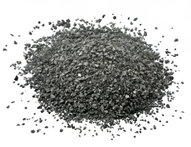 Carbo Animalis
Carbo Animalis
Eating tires patient. Weak, empty feeling in stomach. Burning and griping. Weak digestion. Flatulence. Repugnance to fat food. Sour water from mouth. Pyrosis.
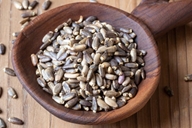 Carduus Marianus
Carduus Marianus
Carduus Marianus is excellent for Pancreas cancer with engorged liver, swollen laterally, painful to pressure. Nausea, retching and vomiting of green acid fluid or blood. Constipation with paste-like clayey stool. Golden colored urine is another characteristic of Carduus mar.
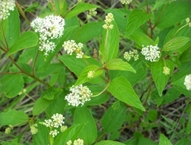 Ceanothus Americanus
Ceanothus Americanus
Ceanothus is effective for Pancreas cancer with liver problems. Full feeling in the region of liver, immediately after dinner. Dull pain in pancreas and liver. Wanted to drink water, but it made him sick. Loss of appetite.
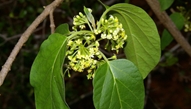 Condurango
Condurango
Painful affections of the stomach; ulceration. Vomiting of food and indurations, constant burning pain. Structure of oesophagus, with burning pains behind sternum, where food seems to stick. Vomiting of food, and indurations in left hypochondrium with constant burning pain.
 Euphorbium Officinarum
Euphorbium Officinarum
Great hunger. Sialorrhea (profuse salty saliva). Waterbrash. Thirst for cold drinks. Sunken; spasmodic, flatulent colic. Stools fermented, profuse, clayey. Feels hollow.
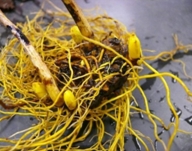 Hydrastis Canadensis
Hydrastis Canadensis
Hydrastis is excellent for Pancreas cancer with cutting pain from liver to right scapula. Liver atrophied, jaundice with pale scanty stools. Digestion weak, loss of appetite. Vomits all food, retaining only milk or water, mixed. Bitter papery taste in mouth.
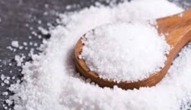 Natrium Muriaticum
Natrium Muriaticum
Hungry, yet loose flesh. Heartburn, with palpitation. Unquenchable thirst. Sweats while eating. Craving for salt. Aversion to bread, to anything slimy, like oysters, fats. Throbbing in pit. Sticking sensation in cardiac orifice.
Cutting pain in abdomen. Distended. Pain in abdominal ring on coughing.
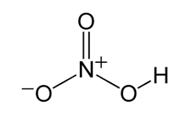 NitricumAcidum
NitricumAcidum
Great hunger, with sweetish taste. Longing for indigestible things-chalk, earth, etc. Pain in cardiac orifice. Dyspepsia with excess of oxalic acid, uric acid and phosphates in urine and great mental depression. Loves fat and salt
Great straining, but little passes, Rectum feels torn. Bowels constipated, with fissures in rectum. Tearing pains during stools. Colic relieved from tightening clothes. Jaundice, aching in liver.
References
1. H., Penman I.D., Strachan M.W.J., Hobson R.P. Davidson’s, Principles and Practice of Medicine. 23rd rev.ed. dinburgh; Churchill Livingstone/Elsevier; 2018. 1417p.
2. Kasper D.L., Fauci A.S., Hauser S.L., Longo D.L., Jameson J.L., Loscalzo J. Harrison’s Manual of Medicine. 19th rev. ed. United States: McGraw Hill; 2016. 1222p.
3. API Textbook of Medicine. Mumbai: The Association of Physicians of India, Jaypee Brothers Medical Publishers (P) Ltd.; 1444p.
4. Dr. Das S. A manual on Clinical Surgery. 13th rev.ed. Kolkata: Dr. S. Das; 2018. 648p.
5. Heinmann V, Boeck S, Hinke A, Labianca R, Louvet C. Meta-analysis of randomized trials—evaluation of benefit from gemcitabine-based combination therapy applied in advanced pancreatic cancer. BMC Cancer. 2008;8:82
6. Cancer Facts and Figures 2009. American Cancer Society. Accessed February 5, 2010.
7. Erickson A, Larson C, Shabahang M. Pancreatic Cancer. Accessed February 21, 2010.
8. Surveillance Epidemiology and End Results (SEER). U.S. Cancer Statistics: 1999-2007 Incidence and Mortality Report. Accessed January 31, 2011.
9. Christopher Johnson, ND, Primary Homeopathic Treatment of Cancers of the Pancreas, Stomach, Gallbladder, and Liver,Natural Medicine Journal ,April 2011 Vol. 3 Issue 4, primary-homeopathic-treatment-cancers-pancreas-stomach-gallbladder-and-liver
10. Boericke W. New Manual of Homeopathic Materia Medica and Repertory. 9th Reprinted Edition. New Delhi: B Jain Publishers (P) Ltd; 2005.
